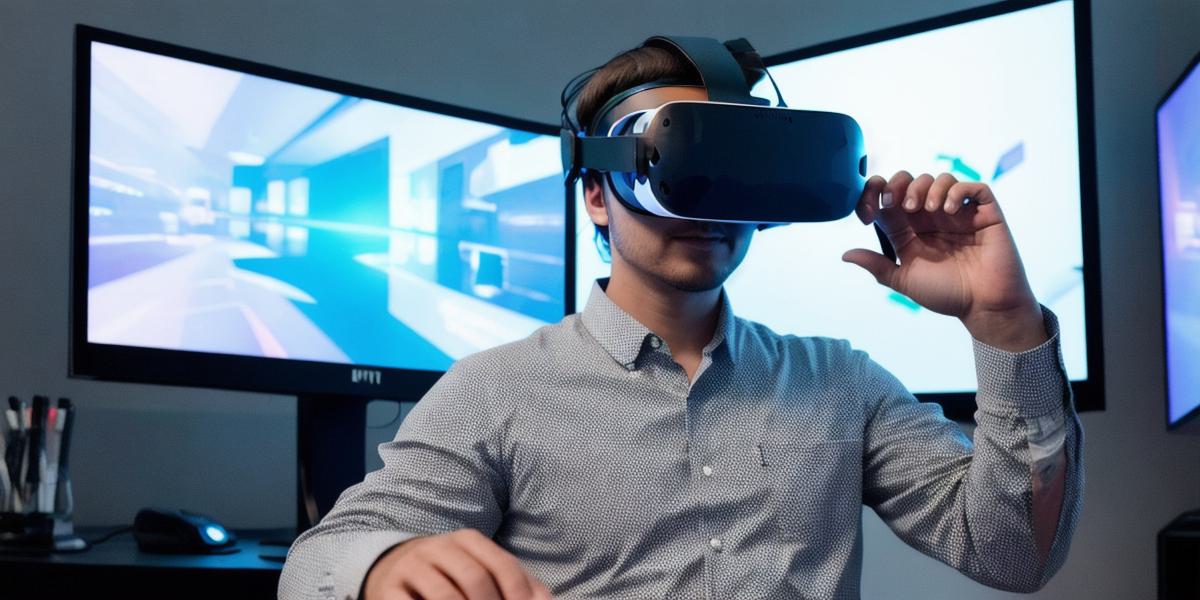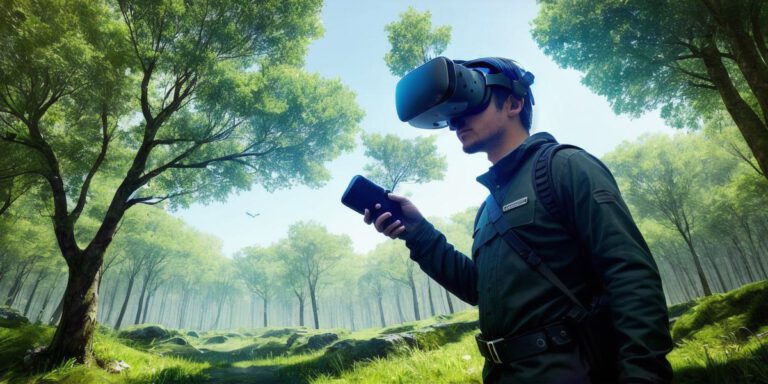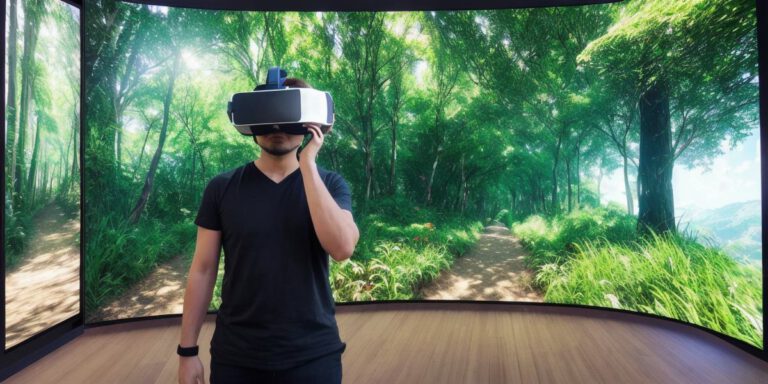Understanding VR Technology: How It Works, Applications, and Future Possibilities

Virtual reality (VR) technology has been rapidly evolving over the past few years, with new advancements emerging in both hardware and software. As a virtual reality developer, it is essential to understand how VR technology works, its current applications, and future possibilities. In this article, we will explore all of these topics in depth.
What is VR Technology?
Virtual reality technology involves creating an immersive experience that simulates a 3D environment. It achieves this by using sensors to track the user’s movements and position, then rendering a virtual world based on those inputs. The result is a fully interactive experience that can be customized to suit the user’s needs and preferences.
How does VR Technology Work?
The key components of VR technology include:
- Head-mounted display (HMD): This is the device that the user wears on their head, which projects a 3D image in front of them.
- Motion tracking sensors: These sensors track the user’s movements and position, allowing the software to accurately map the user’s body in real-time.
- Graphics processing unit (GPU): This component processes the data from the motion tracking sensors and generates the 3D graphics that the user sees.
- Computer or gaming console: This is where all the software runs, including the VR applications and games.
Applications of VR Technology
Virtual reality technology has a wide range of potential applications across various industries, including:
- Gaming: VR has revolutionized the gaming industry, providing players with a fully immersive experience that makes games more engaging and realistic.
- Education: Virtual reality can be used to create educational experiences that are both interactive and engaging, making it easier for students to learn complex concepts.
- Training and simulation: VR technology can be used to train professionals in various fields, such as medicine, aviation, and military, by simulating real-world scenarios.
- Tourism: Virtual reality can provide travelers with a virtual tour of popular destinations, allowing them to experience the sights and sounds without ever leaving their homes.
- Marketing and advertising: VR technology can be used to create immersive advertisements that engage customers in new and exciting ways.
Future Possibilities for VR Technology
The future of virtual reality technology is bright, with many experts predicting continued growth and innovation. Some potential future possibilities include:

- Haptic feedback: This technology will allow users to feel physical sensations in a virtual world, making the experience more realistic and immersive.
- Eye-tracking: By tracking where the user is looking, VR technology can create a more natural experience that mimics the way we perceive the world around us.
- Wireless VR headsets: As technology advances, it may become possible to create wireless VR headsets that eliminate the need for cables and wires.
- Augmented reality integration: Virtual reality technology could be integrated with augmented reality (AR) technology, allowing users to experience both virtual and real-world environments at the same time.
- Brain-computer interfaces: By connecting the brain directly to VR technology, it may be possible to create a more seamless and immersive experience that responds to the user’s thoughts and emotions.
FAQs
- What is virtual reality (VR)?
Virtual reality is a technology that creates an immersive experience by simulating a 3D environment based on the user’s movements and position. - How does VR technology work?
VR technology involves sensors that track the user’s movements, a head-mounted display that projects the virtual world, and a graphics processing unit that generates the 3D graphics. - What are some potential applications of VR technology?
Virtual reality has a wide range of potential applications across various industries, including gaming, education, training and simulation, tourism, and marketing and advertising. - What are some potential future possibilities for VR technology?
Potential future possibilities for VR technology include haptic feedback, eye-tracking, wireless headsets, AR integration, and brain-computer interfaces. - Is VR technology expensive?
The cost of VR technology can vary depending on the hardware and software used, but it is becoming more accessible and affordable as time goes on.








